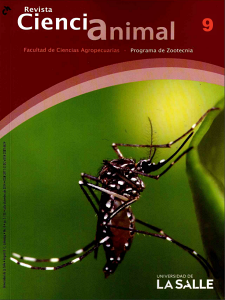Abstract
The study aimed to evaluate growth characteristics and body composition in commercial Zebu calves using various grazing systems in a fattening farm in the foothills region of the Llanos. The experimental group consisted of 112 zebu calves with similar sex, time of birth and weaning time. The animals were randomly divided into four groups of nutritional management: continuous/ extended grazing in savannah (group 1); rotational grazing in savannah (group 2); continuous/ extended in low areas (group 3); and rotational grazing in low areas (group 4). The measures evaluated for growth/carcass were conducted over a period of 37 months, at intervals of 12 months. Measures included in the study were: weight, weight gain, hip height, body length, and chest circumference. The carcass measurements evaluated using real-time ultrasound included: loin eye area (LEA) and backfat thickness (BT). The weight gain was greater for groups 3 and 2, and the lowest growth rates were found in groups 4 and 1. The results of final measurements include gain weight, muscle increase, and fat increase. In general, a higher growth was evidenced in calves fed under continuous grazing in low areas and rotational grazing in savannah, compared to rotational grazing in low areas and extended grazing in savannah.Downloads
Download data is not yet available.



